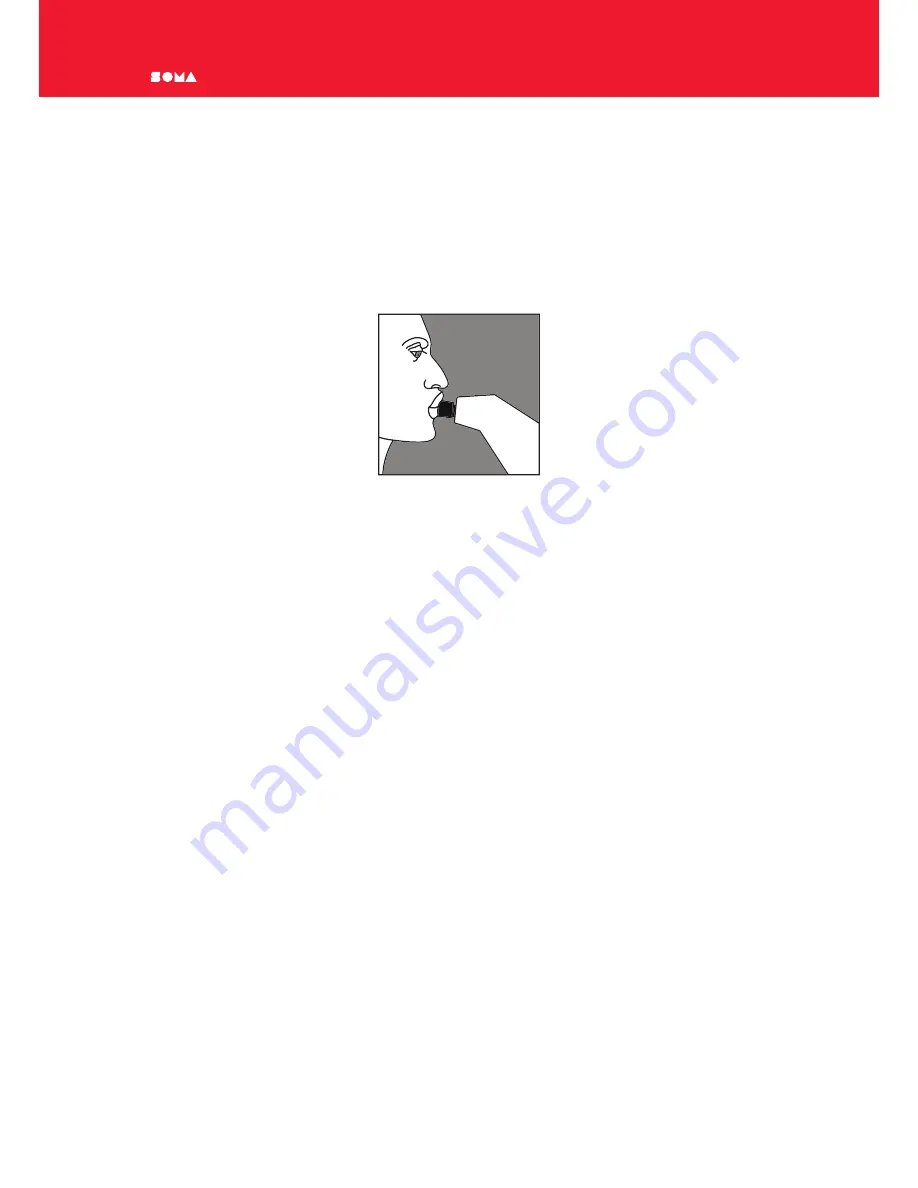
PIPE
USER MANUAL
MICROPHONE
Learning how to play PIPE starts with learning how to use the microphone, which is very
different from conventional vocal microphones. It uses a contact microphone. To achieve
a full voice timbre with mid and low frequencies, you need to press your lips firmly and
tightly against the microphone. The air inside of your mouth and inside of the microphone
should form a single air pocket without significant air leaks. The main position for playing
looks like this:
Singing a few centimeters away from the microphone, like you would with a standard
concert mic, will result in a distant sound that lacks low and mid frequencies, and basically
won’t sound very good. This can be used as a separate form of articulation but should be
understood by the musician. More importantly, using the PIPE in this manner increases the
chance for unwanted feedback on stage.
Changing the angle of your lips and subtly changing the pressure of your lips on the mic
will result in changes in the sound character and should be used as an important part of
playing the PIPE.
The membrane of the microphone is made of brass and is very strong. It will not be damaged
even when you blow into the microphone or suck the air out of it (of course within reasonable
limits). The brass used for the microphone is resistant to the moisture that will inevitably
get inside when you use the mic. You can therefore try intense sound experiments without
worrying about damaging the microphone. Nonetheless, the microphone is connected to
a 6.3mm TRS jack and can be removed and changed if necessary. You can purchase other
microphones with a different frequency response from SOMA Lab to further expand the
possibilities of the PIPE.
To fully master and enjoy this instrument you should invest a good amount of time
experimenting with different ways of creating sounds and using the microphone in different
ways. To get started, it's best to experiment with the REVERB algorithm with just a little bit
of reverberation. This is the only algorithm that lets you hear the unprocessed microphone
sound which makes it easier to understand how the microphone works on its own.
What you should try to master:
1. Press your lips firmly against the microphone, get a sound rich with lows.
2. Learn how to use the angle of your lips and their position relative to the microphone to
control the amount of lows and the voice character. Also, try affecting the sound character
by covering the hole in the microphone with your lips fully and partially.
Содержание PIPE
Страница 1: ...USER MANUAL ...
Страница 22: ...Manual version 1 0 2018 Made in Russia ...
































